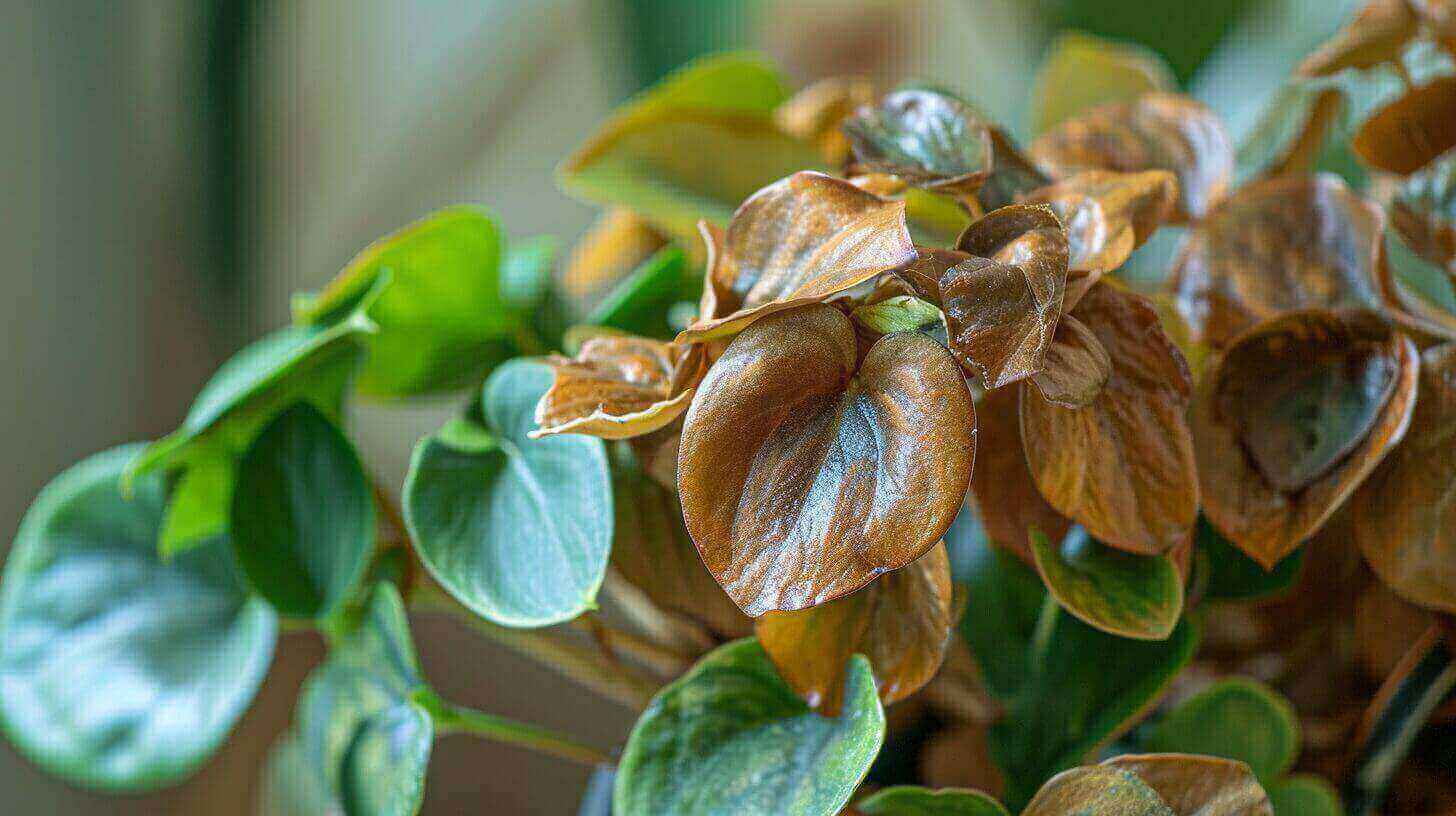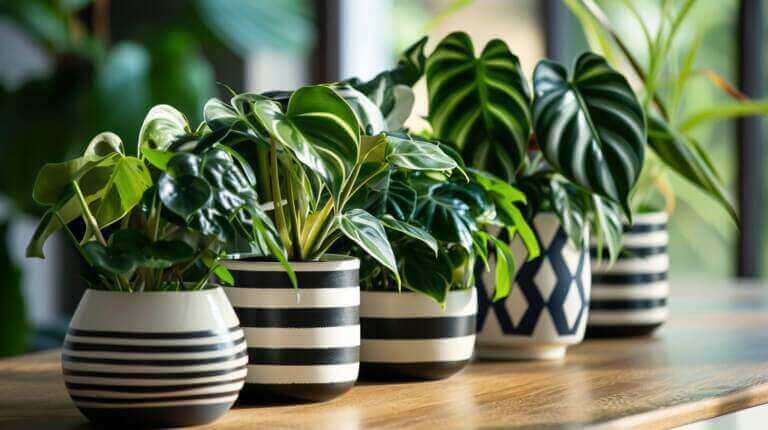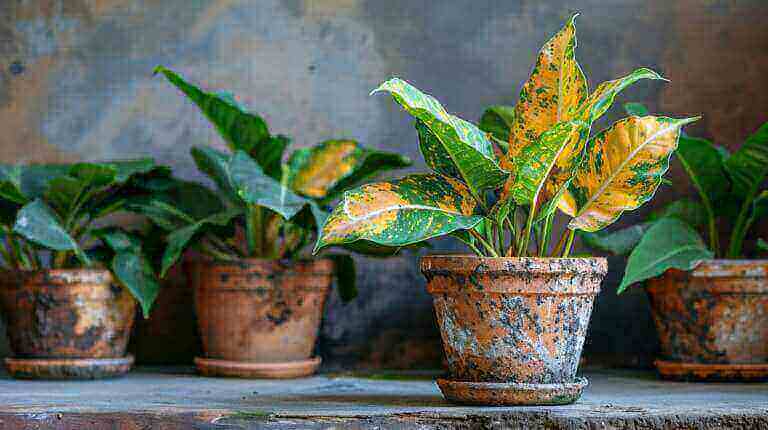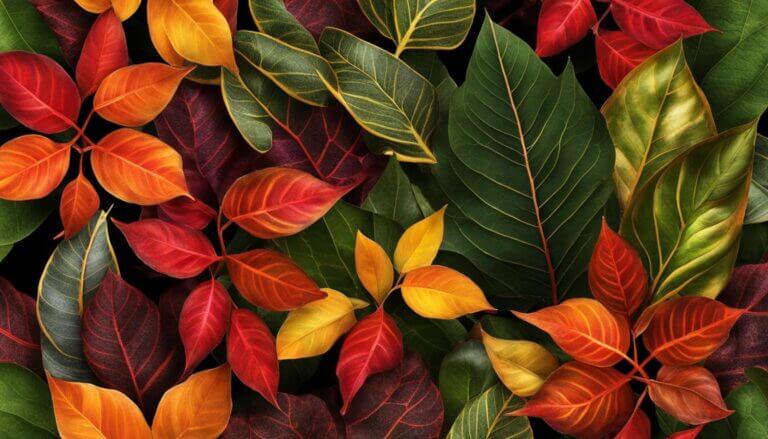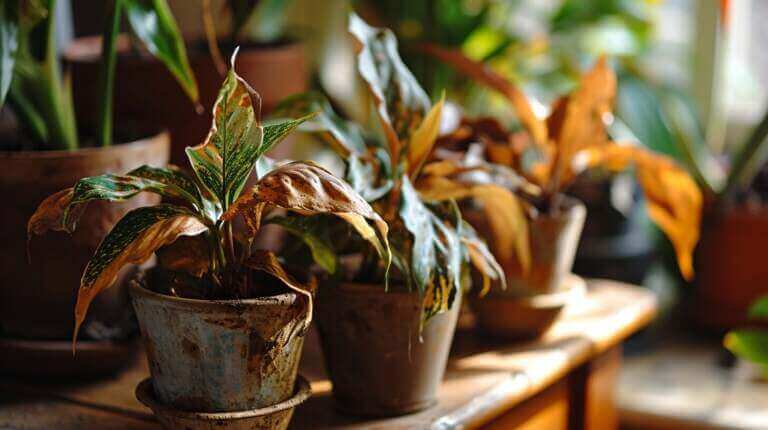Common Causes for Peperomia Leaves Curl or Wilting
Peperomia plants are known for their vibrant and unique foliage, but sometimes their leaves can curl or wilt, which can be concerning for plant owners. There are several common causes for peperomia leaves curling or wilting.
Underwatering is a common cause, as peperomias need consistent moisture in their soil. Low humidity levels can also lead to leaf curling, as peperomias prefer higher humidity environments. Excessive sunlight exposure and high temperatures can cause leaves to curl as well. Overwatering and overfertilization can both lead to root rot, which can cause leaves to wilt. Finally, nutrient deficiencies and pest infestations can also result in curling or wilting leaves on peperomia plants.
Key Takeaways
- Underwatering can cause peperomia leaves to curl or wilt. Maintain a regular watering schedule and monitor soil moisture levels.
- Low humidity can lead to leaf curling in peperomias. Increase humidity around the plant using methods like misting or using a humidifier.
- Excessive sunlight exposure and high temperatures can cause peperomia leaves to curl. Provide indirect sunlight and protect the plant from intense heat.
- Overwatering and overfertilization can cause root rot, leading to leaf wilting. Only water when the top inch of soil is dry and be mindful of fertilization amounts.
- Nutrient deficiencies and pest infestations can also result in curling or wilting leaves on peperomia plants. Monitor for signs of nutrient deficiencies and address pest issues promptly.
Cause of Peperomia Leaves Curling – Underwatering
Underwatering is a common cause of peperomia leaves curling or wilting. Peperomias need consistent moisture in their soil, so if the soil becomes too dry, the leaves will start to curl or wilt. It’s important to establish a regular watering schedule for your peperomia and to monitor the moisture level of the soil. The top inch of soil should be dry before watering again, but the rest of the soil should remain lightly moist. If you notice your peperomia leaves curling, it’s a good indication that it needs more water.
Proper watering is key to preventing underwatering. You can use your finger to test the soil’s moisture level or invest in a moisture meter, which will give you more accurate readings. It’s important to note that peperomias prefer slightly moist soil, not soggy or waterlogged conditions. Overwatering can be just as detrimental as underwatering, so finding the right balance is crucial.
When watering your peperomia, make sure to thoroughly soak the soil until water drains out of the bottom of the pot. This helps ensure that the water reaches the roots and promotes healthy growth. It’s also a good practice to use filtered or distilled water, as peperomias are sensitive to chemicals and minerals found in tap water.
Table: Signs of Underwatering
| Signs | Description |
|---|---|
| Leaf curling | Leaves curl inward or downwards |
| Leaf wilting | Leaves appear limp and droopy |
| Dry soil | Top inch of soil is dry to the touch |
Reasons Why Peperomia Leaves Are Curling – Low Humidity
Low humidity can be a common cause of peperomia leaves curling or wilting. Peperomias thrive in high humidity environments, and when the humidity is too low, they struggle to maintain the moisture balance in their leaves. This can result in curling or wilting leaves that can be concerning for plant owners.
To address the issue of low humidity, there are several steps you can take to increase the humidity around your peperomia plant. One option is to use a humidifier, which can add moisture to the air and create a more suitable environment for your plant. Another option is to mist the leaves regularly with water, as this can help to increase the humidity immediately around the plant. Additionally, you can place your plant on a tray filled with water and pebbles. As the water evaporates, it will create a humid microclimate for your peperomia.
It’s important to note that while peperomias thrive in high humidity, they also require good airflow around their leaves. So, when increasing humidity, ensure that there is still proper ventilation to prevent issues such as fungal diseases. Maintaining a humidity level of around 50-60% is ideal for peperomias, as it mimics their natural habitat and promotes healthy leaf growth.
In Summary
- Low humidity levels can cause peperomia leaves to curl or wilt.
- Increasing humidity can be achieved through the use of a humidifier, regular misting, or placing the plant on a tray with water and pebbles.
- Good airflow is important to prevent issues such as fungal diseases.
- Maintaining a humidity level of 50-60% is ideal for peperomias.
By addressing the issue of low humidity, you can help prevent peperomia leaves from curling or wilting and keep your plant looking lush and healthy.
Excessive Sunlight Exposure and High Temperatures
Excessive sunlight exposure and high temperatures can have a significant impact on the health of peperomia plants, leading to curling or wilting leaves. Peperomias prefer bright indirect sunlight, as direct sunlight can be too intense and cause damage to their delicate foliage. When exposed to direct sunlight for prolonged periods, the leaves may start to curl as a protective mechanism. It’s important to provide your peperomia with the right amount of light by placing it in a location with bright indirect sunlight, away from direct sunlight.
In addition to excessive sunlight, high temperatures can also contribute to the curling or wilting of peperomia leaves. Peperomias are tropical plants that thrive in warm environments, but too much heat can result in moisture loss, causing the leaves to curl or wilt. To prevent this, it’s crucial to maintain a moderate temperature range for your peperomia, ideally between 65°F to 75°F (18°C to 24°C). Avoid exposing your plant to extreme heat or drafts from heating or cooling systems, as these can further stress the plant and lead to leaf curling.
It’s worth noting that different species of peperomia may have varying tolerance levels for sunlight and temperature. Some varieties may be more susceptible to leaf curling under direct sunlight or high temperatures, while others may be more resilient. Therefore, it’s essential to research the specific care requirements of your peperomia variety to ensure optimal growth and prevent leaf-related issues.
In conclusion, excessive sunlight exposure and high temperatures can be detrimental to the health of peperomia plants, resulting in the curling or wilting of leaves. By providing the right amount of indirect sunlight and maintaining a moderate temperature range, you can help prevent these issues and promote the overall well-being of your peperomia plant.
Overwatering and Overfertilization
Overwatering and overfertilization can have detrimental effects on your peperomia plant, causing its leaves to curl or wilt. When we overwater our plants, the roots can become waterlogged and deprived of necessary oxygen, leading to root rot. This can ultimately result in the curling or wilting of the leaves.
Similarly, overfertilizing your peperomia can disrupt its delicate nutrient balance. Excessive doses of fertilizer can burn the plant’s roots and interfere with its ability to absorb water and essential nutrients. Therefore, it is crucial to water your peperomia only when the top inch of soil is dry, and use a well-draining soil mix to prevent waterlogging and root rot.
When it comes to fertilization, always follow the instructions on the fertilizer packaging and avoid overdoing it. Excessive fertilization can lead to nutrient imbalances, further exacerbating the problem of curling or wilting leaves. If you suspect root rot, it may be necessary to repot the plant, removing any affected roots to promote healthy growth.
Remember, proper watering and fertilization practices are key to maintaining the health and vitality of your peperomia plant. By avoiding overwatering and overfertilization, you can help prevent root rot and ensure your plant’s leaves remain vibrant and free from curling or wilting.
FAQ
What are the common causes for peperomia plant leaves to curl?
The most common cause of curling leaves in peperomia plants is overwatering. When you water your plant excessively, the leaves will curl and may even turn brown.
Why are the leaves on my peperomia hope curled?
Curling leaves in peperomia hope can be a sign that the plant may be receiving too much light or not enough water.
When should I repot my peperomia?
You should repot your peperomia when you notice the leaves start to curl or turn brown, which could indicate that the plant is outgrowing its current pot.
What can cause leaves to curl on indoor plants like peperomia?
Indoor conditions such as low humidity, high temperatures, or poor watering habits can cause leaves to curl in indoor plants like peperomia.
What are the possible causes of curling leaves in peperomia?
Possible causes of curling leaves in peperomia include overwatering, under watering, too much light, or a lack of nutrients.
Can repotting cause peperomia leaves to curl?
Yes, if not done correctly, repotting your plant can stress the peperomia, leading to symptoms like curling leaves.
What else can cause leaves to curl in peperomia plants?
Other factors that can lead to curling leaves in peperomia plants include pest infestations, disease, and physical damage.
What are the possible causes of peperomia leaves turning brown?
Overwatering, low humidity, and nutrient deficiencies are possible causes of peperomia leaves turning brown. It’s important to water your plant thoroughly but infrequently to keep your plant healthy.

